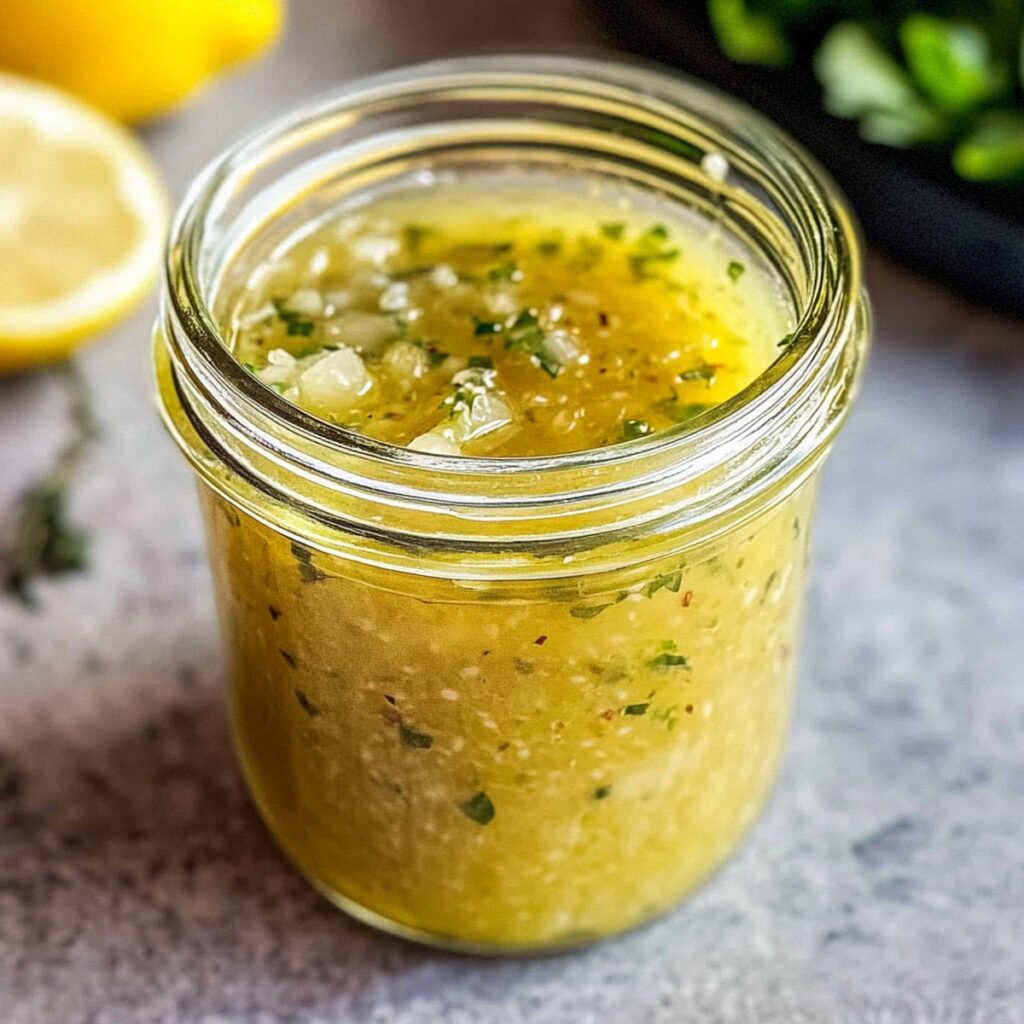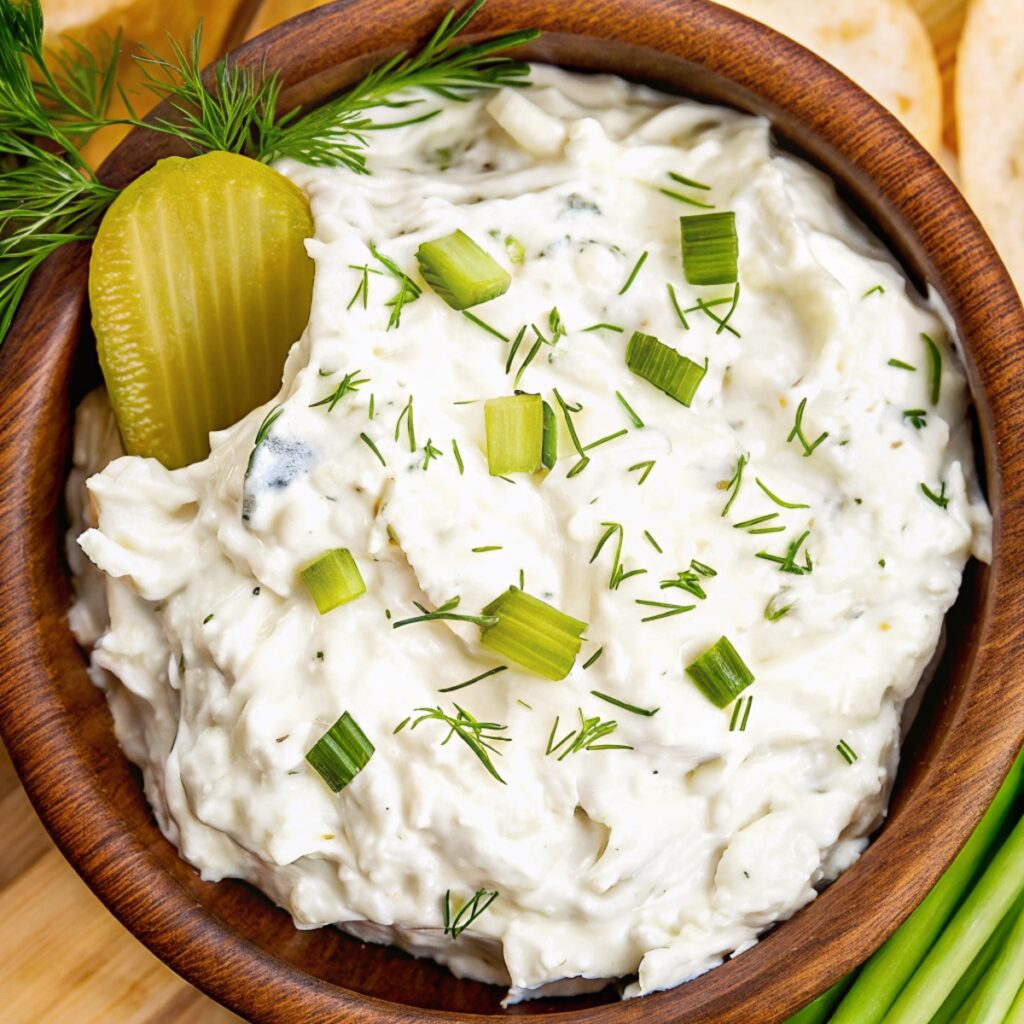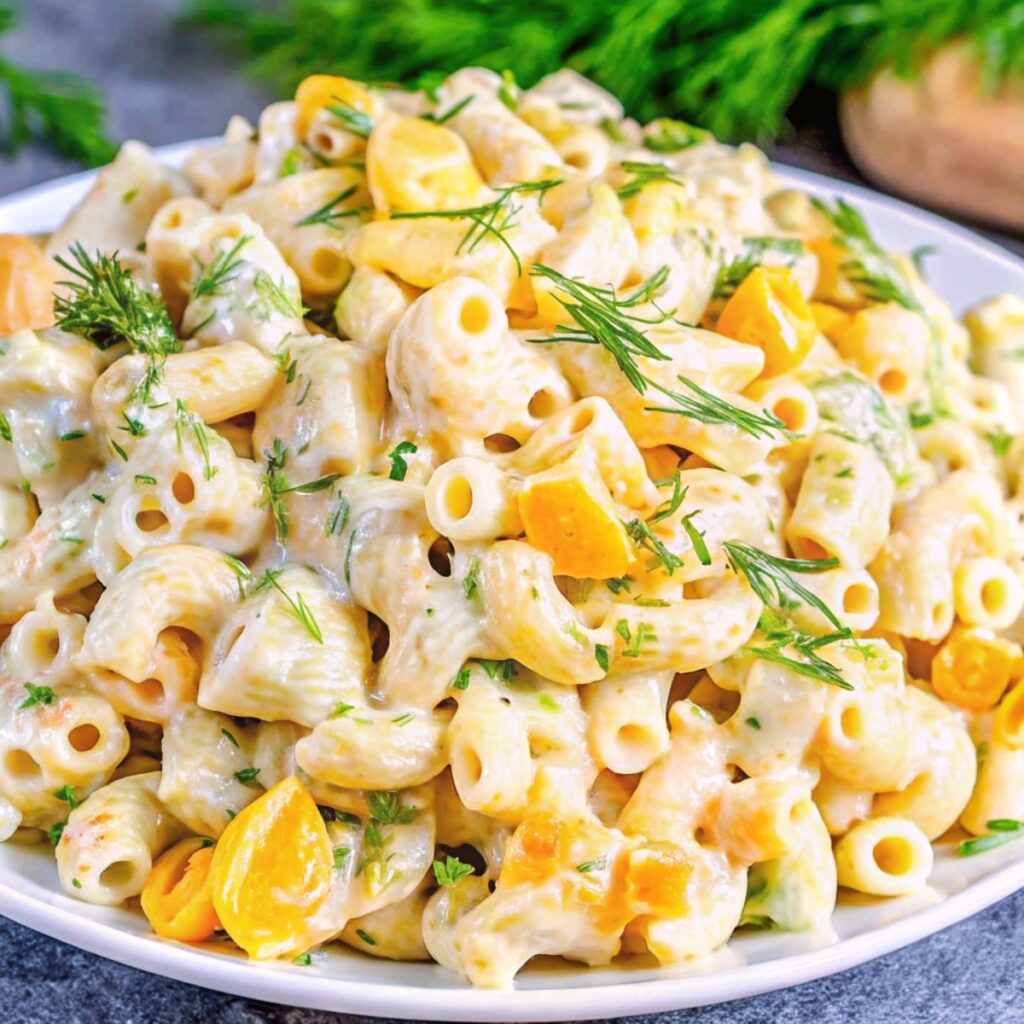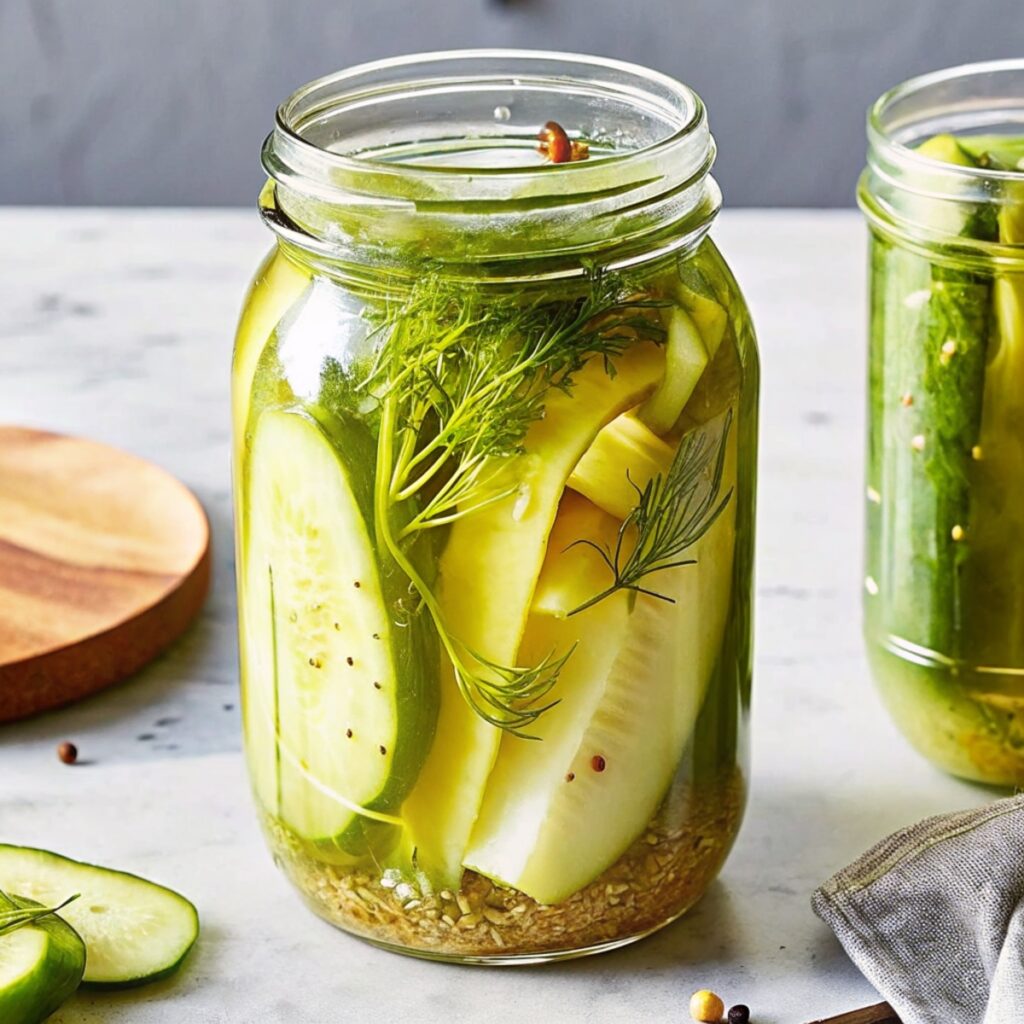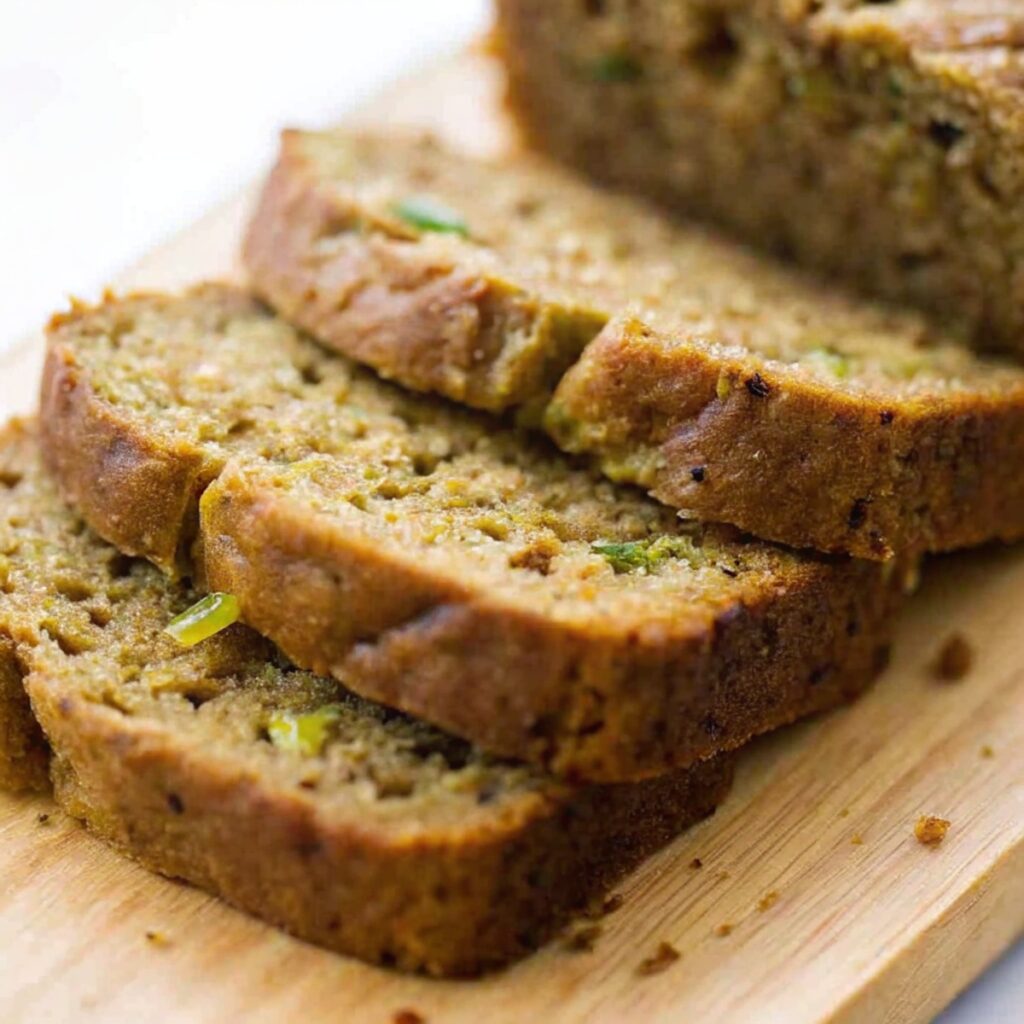There’s something satisfying about having a reliable, homemade dressing ready to go. Lemon vinaigrette is one of those simple recipes that proves you don’t need a long list of ingredients to make something that tastes fresh and bright. I started making my own dressings when I realized how much better they tasted compared to store-bought versions—and how much control I had over the quality of each ingredient. With just a handful of pantry staples and a lemon, you can whip up a dressing that’s light, vibrant, and free from unnecessary additives.
What I like most about this lemon vinaigrette is how quickly it comes together. There’s no need for fancy equipment or complicated steps. It’s just a matter of whisking a few ingredients in a bowl or shaking them up in a jar. The result is a versatile dressing that works on leafy greens, grain bowls, roasted vegetables, or even as a marinade for chicken or fish. I often make a small batch at the start of the week so it’s ready whenever I want to add a little extra flavor to my meals.
If you’re looking to keep things light and healthy, this recipe is a great fit. Using extra-virgin olive oil and fresh lemon juice means you’re getting healthy fats and vitamin C, without any preservatives. You can adjust the seasoning to your taste, add a touch of honey for balance, or toss in some fresh herbs if you have them on hand. It’s flexible, quick, and always delivers a clean, zesty flavor. If you’re new to making dressings from scratch, this is a great place to start.
Letting the Ingredients Shine: Lemon Vinaigrette
Click here to get printable version
Inside This Recipe
- 1/4 cup freshly squeezed lemon juice
- 1 small garlic clove, finely grated
- 1 teaspoon Dijon mustard
- 1/4 teaspoon sea salt, plus more if needed
- Freshly cracked black pepper, to taste
- 1/2 teaspoon honey or maple syrup (optional, for a hint of sweetness)
- 1/4 to 1/3 cup extra-virgin olive oil
- 1/2 teaspoon thyme, fresh or dried (optional)
Putting It All Together
- Add the lemon juice, grated garlic, Dijon mustard, salt, black pepper, and honey (if using) to a small mixing bowl. Whisk until everything is well combined.
- While whisking, slowly drizzle in the olive oil. Continue whisking until the dressing thickens and looks smooth and slightly creamy. If you prefer, you can combine all ingredients in a jar, seal it tightly, and shake until fully blended.
- Taste the vinaigrette. If it’s too tart, whisk in a bit more olive oil until the flavor is balanced. Stir in the thyme if you want an herbal note, and adjust salt or pepper as needed.
- Transfer to a jar or airtight container. Store in the refrigerator for up to one week. If the olive oil solidifies, let the vinaigrette sit at room temperature for a few minutes and stir before using.
Smart Ingredient Swaps (That Still Taste Great)
If you’re out of Dijon mustard, try using whole grain or yellow mustard for a different flavor profile. For a vegan option, maple syrup works just as well as honey for a touch of sweetness. Avocado oil can replace olive oil for a milder taste and a different set of healthy fats. If you don’t have fresh thyme, dried oregano or basil can add a pleasant herbal note. For those avoiding garlic, a pinch of shallot or chives can offer a gentler bite.
How to Plate It for Balance and Beauty
Drizzle the lemon vinaigrette over salads just before serving to keep greens crisp. For grain bowls, spoon the dressing around the edges so it gently soaks in. When using on roasted vegetables, toss them while still warm for better absorption. For a clean presentation, serve the dressing on the side in a small bowl or drizzle in a zigzag pattern just before eating. A sprinkle of fresh herbs or lemon zest on top adds a pop of color and freshness.
Storage Tips to Preserve Nutrients
Store your lemon vinaigrette in a glass jar with a tight-fitting lid to keep it fresh and prevent oxidation. Keep it in the refrigerator, and use within one week for the best flavor and nutritional value. Let the dressing come to room temperature and stir or shake well before each use, as the olive oil may solidify when chilled. Avoid storing near strong-smelling foods to prevent flavor transfer.
Cooking Techniques that Lock in Goodness
Always use freshly squeezed lemon juice for the highest vitamin C content and the brightest flavor. Grate garlic finely to release its beneficial compounds and ensure it blends smoothly. Whisking slowly while adding olive oil helps emulsify the dressing, creating a creamy texture without extra ingredients. If using fresh herbs, add them at the end to preserve their color and nutrients.
Seasonal Superfoods You Can Add
In spring, add finely chopped fresh herbs like parsley or dill for extra antioxidants. During summer, a few crushed raspberries or strawberries can bring a subtle sweetness and vitamin boost. In autumn, try a pinch of ground turmeric for anti-inflammatory benefits. Winter is a great time to add a bit of finely grated orange zest for extra vitamin C and a hint of warmth. Adjust the base recipe as needed to keep your vinaigrette seasonal and nutrient-rich.
Recipe Help: Frequently Asked Questions
Can I use bottled lemon juice instead of fresh?
Freshly squeezed lemon juice is recommended for the best flavor and nutritional value. Bottled juice often contains preservatives and can taste less vibrant. If you must use bottled, choose one with no added ingredients and expect a slightly different flavor profile. Fresh lemon juice will always give your vinaigrette a brighter, more natural taste.
Why did my vinaigrette separate after sitting?
It’s natural for homemade vinaigrettes to separate over time because they don’t contain commercial emulsifiers. Simply shake or whisk the dressing before each use. If you want a thicker, more stable emulsion, try blending the vinaigrette or adding a bit more mustard, which helps bind the oil and lemon juice together.
How can I reduce the garlic flavor if it’s too strong?
If the garlic flavor is overpowering, try using half a clove or letting the grated garlic sit in the lemon juice for a few minutes before mixing the rest of the ingredients. This helps mellow the sharpness. You can also substitute with a pinch of garlic powder for a milder taste. Always start with less and adjust to your preference.
Is it safe to leave the vinaigrette at room temperature?
It’s best to store lemon vinaigrette in the refrigerator to keep it fresh and prevent spoilage, especially since it contains fresh garlic. Leaving it at room temperature for short periods (like during a meal) is fine, but always refrigerate for longer storage. Discard if you notice any off smells or changes in texture.
Can I make this vinaigrette without mustard?
Yes, you can omit the mustard if you prefer, but keep in mind that mustard helps emulsify the dressing and adds depth of flavor. Without it, the vinaigrette may separate more quickly and taste a bit sharper. Consider using a small amount of blended avocado or Greek yogurt for a creamy texture if you skip the mustard.
How do I adjust the acidity if it’s too tart?
If your vinaigrette tastes too acidic, whisk in a bit more olive oil to mellow the sharpness. You can also add a small amount of honey or maple syrup to balance the flavors. Taste as you go, and remember that different lemons vary in tartness, so adjust according to your preference.
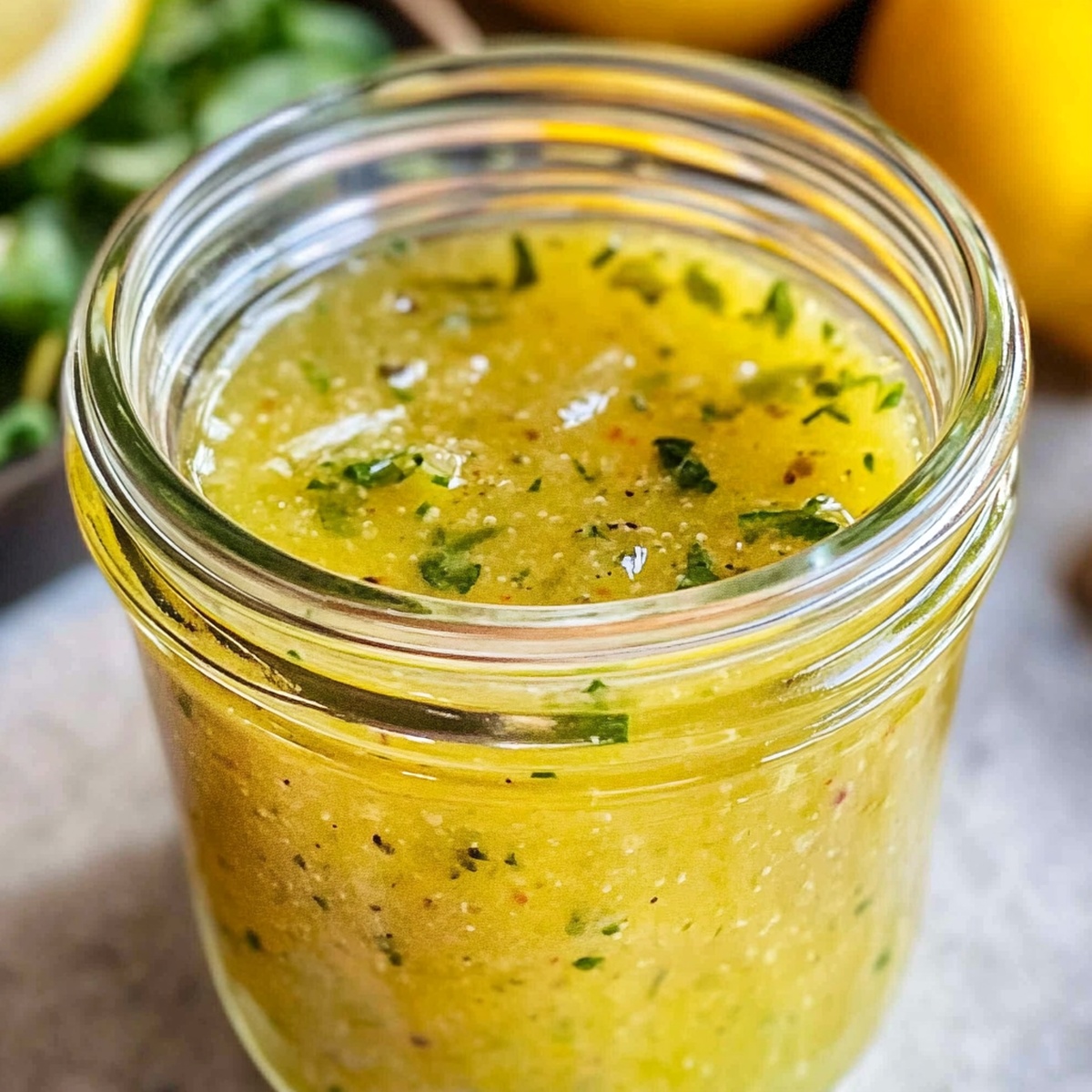
Lemon Vinaigrette
Ingredients
- 1/4 cup freshly squeezed lemon juice
- 1 small garlic clove finely grated
- 1 teaspoon Dijon mustard
- 1/4 teaspoon sea salt plus more if needed
- Freshly cracked black pepper to taste
- 1/2 teaspoon honey or maple syrup optional for sweetness
- 1/4 to 1/3 cup extra-virgin olive oil
- 1/2 teaspoon thyme fresh or dried, optional
Instructions
- In a small bowl, whisk together the lemon juice, grated garlic, Dijon mustard, salt, black pepper, and honey if using.
- Gradually add the olive oil while continuously whisking until the dressing achieves a smooth, thick consistency. Alternatively, for easy mixing, place all ingredients in a jar with a secure lid and shake well.
- Taste the vinaigrette; if it’s too pungent, add more olive oil to your preference. You can mix in thyme for additional flavor and adjust the seasoning to your liking.
- Store the vinaigrette in the refrigerator for up to one week. If the olive oil solidifies, let it sit at room temperature for a few minutes before stirring to reconstitute.
